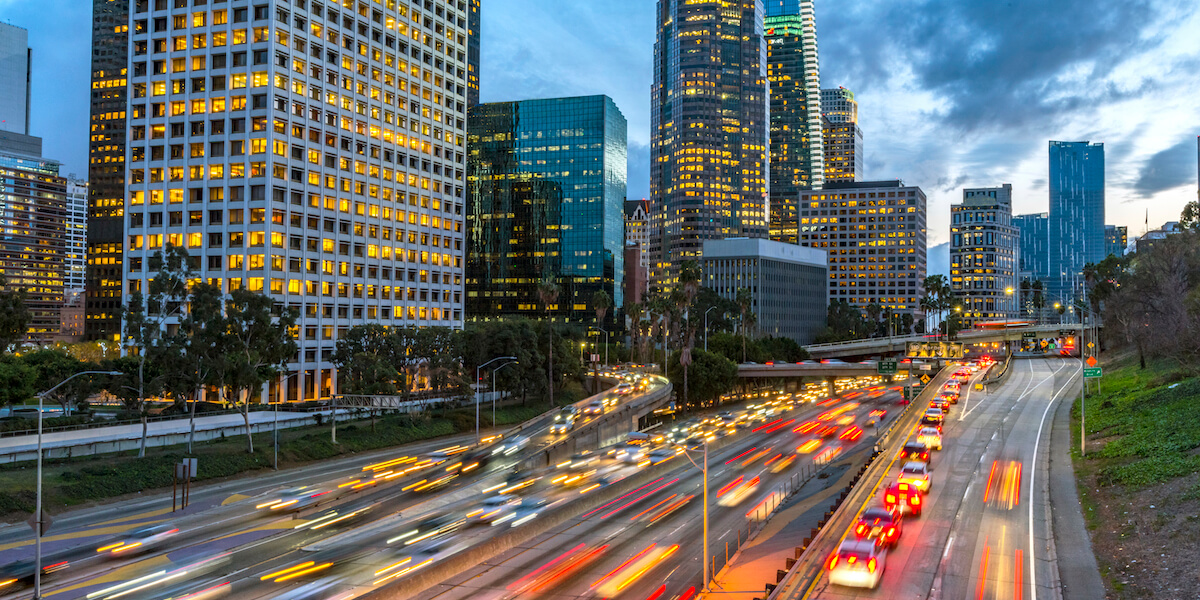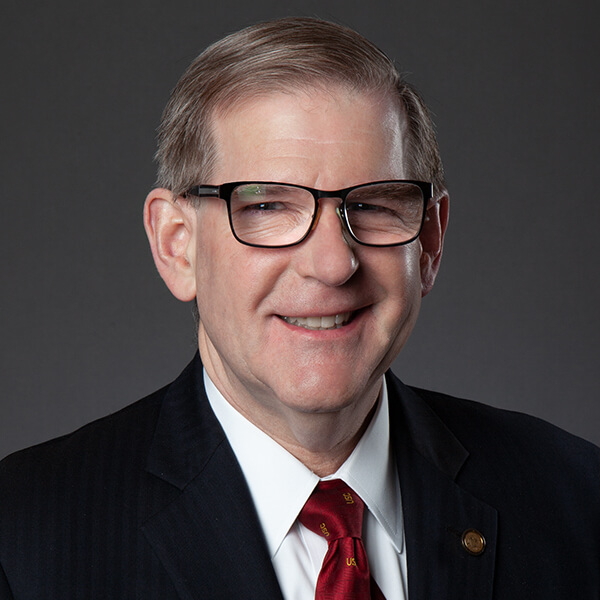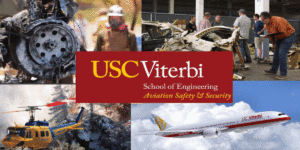
Photo/iStock
In anticipation of the 2028 Summer Olympics, the Los Angeles County Metropolitan Transportation Authority has launched the “Twenty-Eight by ‘28” initiative. The goal: finish 28 important transit projects in time for the Olympic Games that will bring “benefits to Los Angeles County for generations to come.”
Planned projects include rail extensions of Purple, Gold and Orange lines; an Airport Metro Connector station; and express lanes on Interstate 105 and the Sepulveda Pass. All told, the ambitious project – funded largely by 2016’s Measure M – would cost more than $26 billion, the MTA said in late 2018.
Professor James Moore believes Metro’s ambitious goals far outstrip the agency’s ability to pay for them. With an expertise in economic impact analysis relating to transportation engineering and systems, Moore’s transportation findings have appeared in academic journals as well as such mainstream publications as the Los Angeles Times and Orange County Register.
A professor at the USC Viterbi School of Engineering for 32 years and past president of the Institute of Industrial and Systems Engineers, Moore serves on the board on the California Transportation Foundation. He is director of USC’s Transportation Engineering Program, and holds appointments with the Sonny Astani Department of Civil and Environmental Engineering; the Daniel J. Epstein Department of Industrial & Systems Engineering; and the USC Sol Price School of Public Policy.
Moore recently collaborated with Thomas A. Rubin – a veteran transit consultant and founder of the transit practice of what is now Deloitte & Touche, LLP – to write a series of 15 white papers for the Reason Foundation critiquing Metro’s Twenty-Eight by ’28 initiative. He spoke with senior writer Marc Ballon.

Professor James Moore (Photo/Jeffrey Fiterman)
Why are you so skeptical about Metro’s Twenty-Eight by ’28 plan?
I am skeptical of the plan because I have examined its assumptions and claims and compared them to 30 years of historical data relating to Metro’s performance and that of its predecessor agencies. Metro has a long history of overpromising and underdelivering.
Metro’s most important proposal for new revenue, congestion pricing, includes revenue estimates that require Los Angeles to be an order of magnitude more productive than London in producing toll revenue. This is unrealistic in the extreme. Metro’s sales tax revenue forecasts have been wildly optimistic and continue to be. It will not have the resources to deliver the projects it wants to accelerate. They have spent close to $26 billion on light and commuter rail since about 1983, and yet overall transit ridership peaked in Los Angeles County in 1985.
Metro hopes to have an incredible transportation network in place before the 2028 LA Summer Olympics. What do you predict will happen?
Metro is going to have lots of project shortfalls as they have in the past. And the way Metro has tended to make up those project shortfalls has been to shift resources from the bus mode toward rail construction. That means reducing bus service, decreasing frequency on various lines, increasing headways, eliminating late night service and some lines entirely. As a result, you end up with very crowded buses that are saturated. We wind up with fewer options for low-income people who need to travel and work.
Why has MTA’s ridership declined as more resources are allocated to light rail and commuter trains at the expense of buses?
Rail is an expensive way to provide seat miles. You have to give up a lot of bus service to pay for a little rail service. The buses are full. Reduce bus service to fund rail and fewer people show up on rail than disappear from bus. Metro’s 2018 rail ridership grew from zero in 1985 to 110.2 million per year, but bus ridership has crashed from 497.2 million per year to 280.8 million in the same period, a loss of 216.4 million trips.
In your report, you write that low-income residents will suffer most from Metro’s Twenty-Eight by ’28. Why?
What really gives me indigestion is that under the plan Metro really wants to accelerate these expensive capital projects. More rail construction more quickly likely means we run out of money more quickly. As I’ve said, that means shifting more resources from bus to rail. And there are poor people on the buses. You take that service away, and you’re hurting the lowest income strata in your society. Not only are they bearing the weight of a very regressive sales tax, but they are the ones who experience diminished transit service when we misallocate transit resources.
What happens to riders with the diminishment of bus service?
If you price somebody off the transit system or eliminate service that they need, it’s hard to know what’s going to happen to them. We have looked. It turns out there are lots of informal carpools out there. So many, in fact, that they become sort of gray market van pools. Here’s the bottom line: If we improve bus service and reduce fares, transit ridership goes up. When we diminish bus service and increase fares to shift resources to rail construction, transit ridership goes down.
Given L.A.’s increased congestion, what makes you think people will take buses – even if they’re much nicer and less crowded – if they’re going to be stuck in traffic? Isn’t rail service better and more reliable?
Well, busways are cheaper to build than railways. They’re more flexible because the vehicles can get on and off. And they’re higher capacity, because trains have to be separated by minutes and buses can be separated by seconds. We could create an dedicated ride way for a bus, like the El Monte Busway. You could even do it on Wilshire Boulevard or Sunset. There have been examples in the past. There was a bus-only lane on Spring Street, a contra-flow lane that was retired. It probably shouldn’t have been. There’s been talk about putting a continuous bus lane on Wilshire for some time. They work.
Your many criticisms of MTA notwithstanding, you support Metro’s call for “congestion pricing.” Why?
Congestion pricing would be very effective. When I get on the freeway at rush hour or even a busy street, I foul the air and I slow other people up. Those costs are real. But I ignore them. I ignore them because I don’t pay them.
If there was a convenient way to incorporate those costs in my decision to travel, I would only take the trip if the benefits to me exceeded the costs. Congestion pricing is internalizing an externality. That means making drivers pay a fuller share of the cost of their decision to travel. It means more rational decision making, such as imposing a cost on those traveling during rush hour and perhaps no cost at all to someone traveling at 2 a.m. when nobody’s on the roads. Congestion revenues would be collected electronically, and we could build roads with that money or provide low-income households with transportation vouchers.
How should Metro improve overall transit?
Metro should focus on serving transit riders rather than building capital projects and accumulating sales tax revenues to pay for these projects. Metro knows exactly how to increase transit ridership: improve bus service and slash fares. This worked in 1982, 1985 and from the mid 90s until 2007. It will work now.
And if we were just serious as a heart attack about transit, the first thing we ought to do is legalize it. Uber and Lyft are wonderful. But think about airport vanpools. There was a time when airport vans were basically unregulated. They were in a regulatory niche. They weren’t taxis. They weren’t buses. They weren’t automobiles. So, you’d get off the airport at LAX or SFO, and there’d be these owner-operators trying to undercut each other and bid for your business. The traveling public got a good deal: low-cost service, they had a lot of options. Then economic interests with lots of lobbyists and large van fleets got involved. They asked politicians to “reduce confusion” at the airport. Really, these larger operators were just being out-competed by mom-and-pop operators at the airport. As a result, we began to regulate the bejesus out of airport vans, and we now have higher costs and fewer service options than before. There’s less money being made, but it’s being made by fewer people. They’re better off, but the public isn’t.
Published on July 9th, 2019
Last updated on July 9th, 2019











